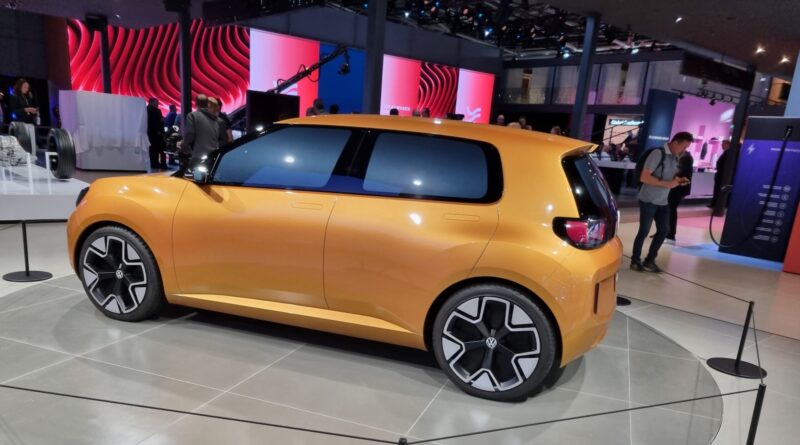Storm Clouds Are Gathering Over The Volkswagen–Rivian Bromance
Support CleanTechnica's work through a Substack subscription or on Stripe.

Volkswagen Group just can’t seem to catch a break when it comes to software. It is really good at manufacturing automobiles and it is pretty darn good at battery electric powertrains, but it has stumbled repeatedly when it comes to making cars that are the “computers on wheel” first brought to market by Tesla in 2012 when it introduced the Model S.
When the Volkswagen ID.3 first appeared, it was plagued with software glitches that, according to multiple reports, meant most of the early production cars were stored in outdoor lots all over Germany waiting for software updates that would make them at least drivable, even if some of the controls and display screens did not function as intended.
The problems were not confined to just electric vehicles. For at least the past decade, every manufacturer has been tripping all over itself to bring the “computer on wheels” vibe to their products, even the ones with infernal combustion engines. That meant the problems at Volkswagen Group affected all its products, including those from Porsche, Audi, and Bentley. The purchaser of an ID.3 might be tolerant of some glitchy software, but the purchaser of a Porsche would not be so forgiving.
And so, Volkswagen created CARIAD, a software division to rule them all, but it was no more successful at solving the issues than the Volkswagen divisions were. Some senior executives got tossed overboard, but still the problems persisted. And so Volkswagen did something very uncharacteristic — it looked outside the company for help and decided to link up with Rivian, which was having some success at making software platforms for its vehicles that actually worked.
Volkswagen Turns To Rivian
Initially, Volkswagen was said to have pledged $5 billion to Rivian to pull its digital chestnuts out or the fire. Late last year, there were reports that VW had thrown another $800,000 into the pot.
But according to Germany’s Manager Magazin, the relationship between Rivian and Volkswagen is experiencing some turbulence. “Volkswagen is reportedly encountering extensive problems in its partnership with Rivian. As a result, electric models intended to run on Rivian software are apparently delayed. Furthermore, Rivian’s algorithms cannot simply be transferred to internal combustion engines, which Volkswagen now seems likely to keep in the line-up for longer.”
Highly placed sources said Audi’s Q8 e-tron SUV and A4 e-tron may be delayed by at least a year, moving their launch date back to mid or late 2028. The debut of Porsche’s K1 SUV, which is supposed to be a battery electric model positioned above the Cayenne due in showrooms by late 2027, is now postponed indefinitely.
What is most surprising about the report is a suggestion that CARIAD, bloodied and bruised by constant corporate infighting and upheavals, may be resurrected as Volkswagen Group CEO Oliver Blume tries to find someone — anyone — who can solve the company’s ongoing software issues. Things must be pretty intense in the C suite in Wolfsburg for that to happen.
Volkswagen Taps The Brakes On Electric Vehicles
To be fair, there were reports this week that Volkswagen Group — and Porsche in particular — is rethinking its electrification strategy. Porsche has been hammered by US tariffs. Since the US is its largest export market, and since the current administration would rather eat ground glass than lift a finger to move the EV revolution along, Porsche now says it will keep cranking out cars with gasoline (and maybe diesel) engines far longer than planned.
When Volkswagen and Rivian decided to join forces, they created a joint venture named Rivian and Volkswagen Group Technologies. For Volkswagen, the initiative represented a fresh attempt to close its software gap. Both companies intended to use the software for their own models based either on Rivian’s zonal electronic architecture or the joint venture’s more enhanced version that working together was expected to create.
Manager Magazin explains how Oliver Blume, since taking over as CEO of Volkswagen Group, has cleared up chaos at CARIAD, which was known as a bottleneck that delayed several car launches by years. Blume shifted from a fully in-house software development division to a partner strategy. For its partners, Volkswagen chose Rivian and Xpeng. Now it appears one of those partnerships has created new problems.
Volkswagen is now saying it will have more combustion models across all divisions. But Rivian’s software was never designed for cars with internal combustion engines and reportedly Rivian — which builds battery electric vehicles exclusively — has little interest in expanding into the ICE space.
Interim Solutions Needed
Manager Magazin says, “Interim solutions are needed. CARIAD may even have to step in. This triggers new multi-billion-euro delays across the group, in some cases by several years.” In a crisis meeting at the Munich auto show recently, brand and development heads met to reorganize launch plans, as previous schedules were no longer viable. On October 7, 2025, Volkswagen is expected to announce which new models will launch when and with what software.
Another issue is that Volkswagen employees tasked with coordinating with Rivian say they are being marginalized by Rivian, whose primary focus is on getting the R2 into production. That vehicle is expected to go on sale in late 2026 and will supposedly include the software jointly developed by the two companies.
Even though initial tests with Rivian modules are expected this winter, they will only “properly begin” for Volkswagen, Audi, and other brands after the Rivian portion of the testing is completed, according to the sources. Only after the code package is completed will it be integrated and adapted for use in cars manufactured by Volkswagen Group.
“The dispute over how much the software can be modified is already underway,” the sources said. Audi and Porsche reportedly are interested in maximum customization capability while Rivian prefers simplicity. Manager Magazin asks, “How can this team satisfy the needs of ten brands?”
ID.1 Will Be First
So far as anyone outside the company knows, the ID.1 will be the first EV from Volkswagen with Rivian software. It is scheduled to arrive by late 2027. The first Audis to use the Rivian software package will be the Q8 e-tron and A4 e-tron, but both are likely to face further software-related delays.
Once the Rivian software packages are available, they must be “adapted for the models, customized, and flawlessly adjusted.” The A4 e-tron was originally scheduled for release in 2023 but is now planned for late 2028. “Developers are fed up,” Manager Magazin reports.
To equip the retained combustion models with modern software, CARIAD software may need to be used longer than planned. A Rivian software version adapted for ICE vehicles is also likely. Together, the two approaches could cost the group an additional €6.5 billion.
There is one ray of sunshine in all this digital gloom. The joint venture with Xpeng is said to be progressing well according to the sources. We wonder if Volkswagen is having buyer’s remorse because of its decision to hitch its wagon to Rivian’s star?
 Sign up for CleanTechnica's Weekly Substack for Zach and Scott's in-depth analyses and high level summaries, sign up for our daily newsletter, and follow us on Google News!
Sign up for CleanTechnica's Weekly Substack for Zach and Scott's in-depth analyses and high level summaries, sign up for our daily newsletter, and follow us on Google News!
Have a tip for CleanTechnica? Want to advertise? Want to suggest a guest for our CleanTech Talk podcast? Contact us here.
Sign up for our daily newsletter for 15 new cleantech stories a day. Or sign up for our weekly one on top stories of the week if daily is too frequent.
CleanTechnica uses affiliate links. See our policy here.
CleanTechnica's Comment Policy

